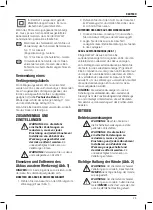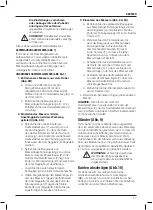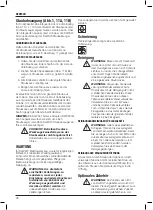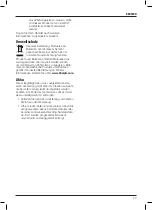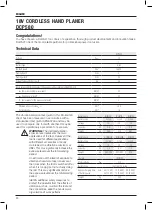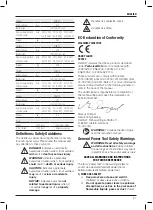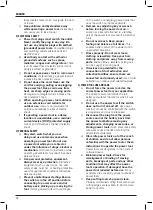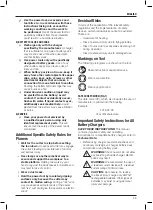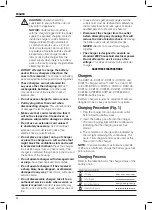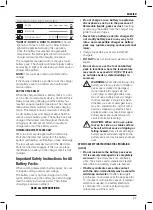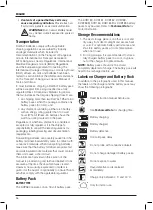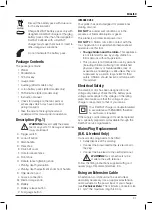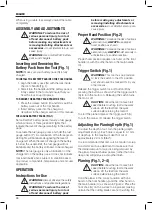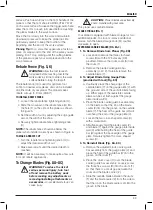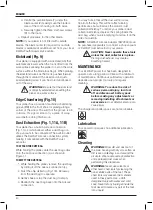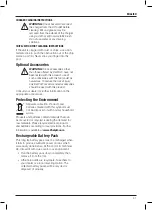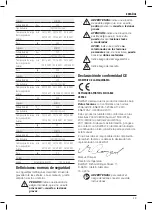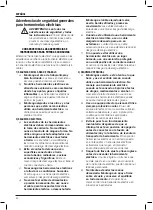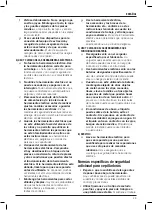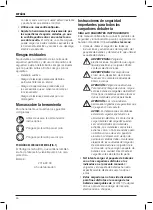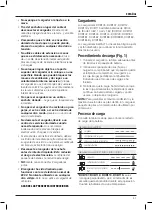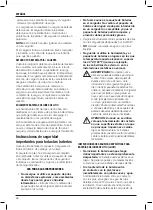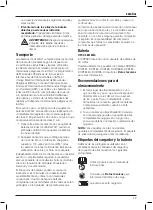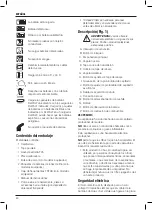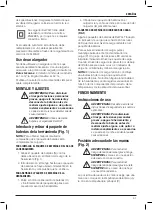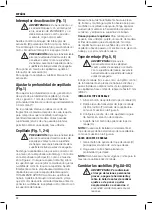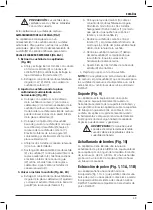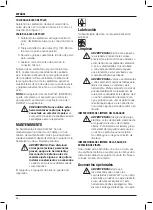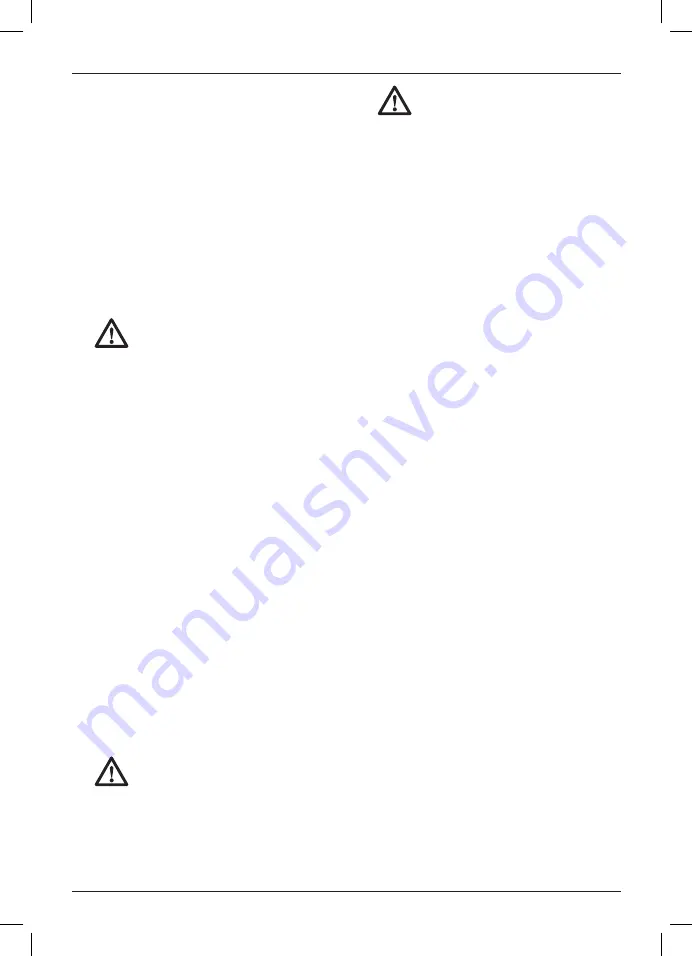
39
english
CAUTION:
Planer blades are extremely
sharp. Handle with great care.
This planer uses carbide blades.
BLADE STORAGE (FIG. 7)
Your planer is equipped with blade storage for two
additional blades. To store or remove additional
blades, turn the blade storage knob (M) counter
clockwise to open.
REVERSIBLE CARBIDE BLADES (FIG. 8A-C)
1. To Remove Blade from Planer (Fig. 8B)
a. Loosen and remove the three star-head
screws (R) with the T25 star key (DD)
provided. Remove the drum cover (S) from
the drum (T).
b. Remove the blade carrier/guide bar
assembly (U, W, Z). Carefully remove the
carbide blade (Y).
2. To Adjust Blade Using Gauge Plate
(provided with tool) (Fig. 8C)
a. Cautiously place the sharp edge of the
carbide blade (Y) on the gauge plate (V) with
the grooved side of the carbide blade facing
up. Either edge of the reversible carbide
blade can be set flush against the gauge
plate inside wall (X).
b. Place the blade carrier/guide bar assembly
on the blade so that the rib on the blade
carrier (Z) fits into the groove on the carbide
blade (Y). The heel of the guide bar (W) will
over-hang the end of the gauge plate (V).
c. Loosen the two cross-shaped screws (U)
with a screwdriver.
d. Simultaneously hold the blade carrier (Z)
and blade (Y) against the gauge plate inside
wall (X) while holding the heel of the guide
bar (W) against the back edge of the gauge
plate. Securely tighten the cross shaped
screws (U).
3. To Reinstall Blade (Fig. 8A, 8C)
a. Remove the adjusted blade carrier/guide
bar assembly from the gauge plate (V) and
place the heel of the guide bar (W) into the
groove on the drum (T).
b. Place the drum cover (S) over the blade
carrier/guide bar assembly. Loosely screw
the three hex screws (R) into the drum (T)
so that there is a small gap between the
drum and the blade carrier (Z).
c. Slide the carbide blade between the drum
(T) and the blade carrier (Z) from the side so
that the rib on the blade carrier sets into the
groove in the blade.
surface. Push down firmly on the front handle of the
planer so that the front shoe is ABSOLUTELY FLAT
on the work surface. Squeeze the trigger switch and
allow the motor to reach full speed before touching
the planer blades to the work surface.
Move the tool slowly into the work and maintain
downward pressure to keep the planer flat. Be
particularly careful to keep the tool flat at the
beginning and the end of the work surface.
Planing Tip:
For a smoother appearance, fasten a
piece of scrap wood to the end of the piece you are
planing. Don’t stop planing until the cutting blades
of the planer are past your workpiece and into the
scrap material.
Rebate Fence (Fig. 5, 6)
WARNING:
Allow the tool to reach
full speed before touching tool to the
work surface. Lift the tool from the work
surface before turning the tool off.
The rebate fence (Q) is used for optimum tool
control on narrow workpieces and can be installed
on either side of your planer. The planer makes
rebate cuts up to 9 mm (23/64").
TO INSTALL REBATE FENCE
1. Loosen the rebate fence tightening knob (H).
2. Slide the crossbar on the rebate fence (Q) into
the hole (F) on the side of the planer as shown
in Figure 5.
3. Set the width of cut by adjusting the edge guide
across the width of the shoe.
4. Securely tighten rebate fence tightening knob
(H).
NOTE:
The rebate fence should be below the
planer when installed correctly as shown in Figure 6.
TO MAKE A REBATE CUT
1. Turn the rebate fence tightening knob (H) to
adjust the desired width of cut.
2. Make several cuts until the desired depth is
reached.
NOTE:
It will be necessary to make quite a few cuts
for most rebate applications.
To Change Blades (Fig. 8A–8C)
WARNING:
To reduce the risk of
serious personal injury, turn tool
off and remove the battery pack
before making any adjustments or
removing/installing attachments or
accessories.
An accidental start-up can
cause injury.

